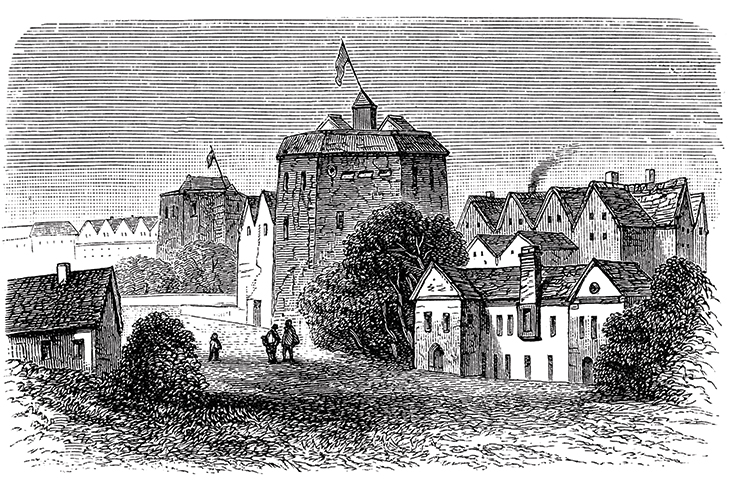IN ASSOCIATION WITH THE PRINCIPAL PARTNERS OF SHAKESPEARE’S GLOBE’S 2019 SUMMER SEASON

Though the new production of Richard II we’ve been discussing here is taking place at the Globe, it’s perhaps worth remembering that the original didn’t. The play precedes the building of the first theatre by half a decade or so. It is thought to have been written in 1595; its first recorded staging is from the winter of that year in a private house in the presence of Queen Elizabeth’s privy councillor Robert Cecil, Lord Salisbury (who would go on to be a pivotal figure in her reign and the early Jacobean era). Its first appearance in print was in a Quarto of 1597.
The play, as I noted a couple of weeks ago, was a political hot potato then as now, and more than just for the historical resonances of its content. What may have been the first production at the Globe, in 1601, was most likely held as a fundraiser for the Earl of Essex’s rebellion. That didn’t, if you’ll recall, go so well for the Earl of Essex, though I don’t suppose we can blame the actors.
And it wasn’t until 1608 — after Elizabeth’s death — that a published version included Act IV, Scene One: the scene in which King Richard is deposed. Tudor monarchs were notedly antsy about even make-believe depositions. As King Richard himself puts it, countenancing ‘the deposing of a king’ is a ‘heinous article […] cracking the strong warrant of an oath,/ Mark’d with a blot, damn’d in the book of heaven’. Eight decades on, it was still a dangerous text: a 1680 adaptation was suppressed on political grounds, even though the adapter, Nahum Tate, set it abroad and called it The Sicilian Usurper in the hopes of tiptoeing around monarchical sensibilities.
In the 12th century we were more relaxed about cracking the strong warrant of an oath, though Richard II still got less stage-time than the play named for its protagonist’s successor Richard III. Nevertheless, era-defining Richards have included John Gielgud and Ian Richardson, and recent years have seen Eddie Redmayne and Fiona Shaw in the title role. In two weeks we’ll see how Adjoa Andoh measures up.
IN ASSOCIATION WITH THE PRINCIPAL PARTNERS OF SHAKESPEARE’S GLOBE’S 2019 SUMMER SEASON








Comments